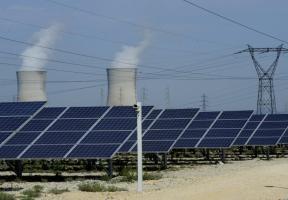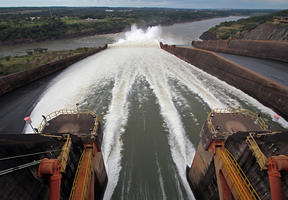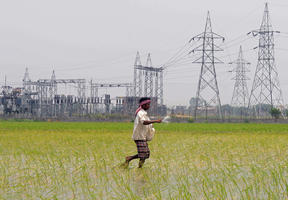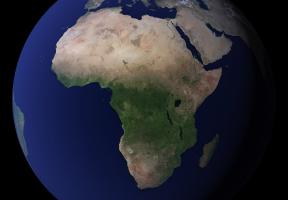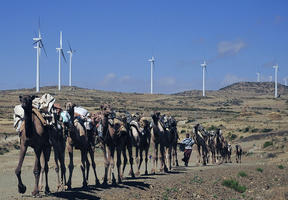Forests & Oceans: Essential for the Climate
10 min read
The Earth naturally captures more than half of the CO2 released into the atmosphere, with its forests and oceans playing a critical role as carbon sinks. However, this role is being compromised by deforestation and ocean acidification – two issues that are squarely on the agenda for negotiations.
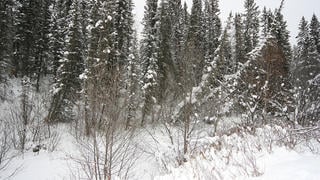
© BURN GINA - SNOW WHITE PRODUCTIONS - Oceans and forests play a critical role as natural carbon sinks. Boreal forests (photo) are particularly effective.
Annual emission and absorption flows
The oceans and landmass play a vital role in capturing and storing carbon dioxide (CO2) released into the atmosphere. Data from the 2013 report of the demonstrate the importance of these natural carbon sinks:
- Fossil combustion and cement production account for annual CO2 emissions of 28.6 Gigatonnes (Gt), while changes in land use, notably related to farming, add another 4 Gt each year.
- Land-based carbon sinks – essentially forests – take up 9.5 GtCO2 a year and the oceans absorb 8.4 GtCO2.
- The remaining 14.7 GtCO2 are released into the atmosphere.
As these figures show, forests and oceans capture more than half of annual emissions, helping to slow the rise in atmospheric CO2 levels and the resulting impact on climate change.
Photosynthesis
This ability to capture CO2 stems to a large extent from the process of carried out by trees, plants, seaweed and micro-organisms such as . When exposed to sunlight, these mini-factories are able to transform water and atmospheric CO2 into carbohydrates (the building blocks of plant matter) and oxygen. The amount of oxygen produced during photosynthesis equals the amount of CO2 absorbed. This process maintains a constant rate of oxygen in the atmosphere and produces organic matter on Earth.
Plants take up carbon dioxide through their leaves and stems, especially during their growth stage, and then store it. Trees have a very high storage capacity, with carbon accounting for 20% of their total weight on average. As a rule of thumb, a cubic meter of wood is generally considered to equal one metric ton of carbon.
Storage in plants and soil
When plants die, the carbon moves into the soil. The aggregate amount stored in plant matter and in the top meter or so of soil differs depending on the type of ecosystem. Wet regions are the most effective, storing around 700 metric tons of carbon per hectare (one metric ton of carbon equals 3,667 metric tons of CO2). This is due not to the vegetation, but to the damp, uncultivated soil, which keeps micro-organisms from accessing the oxygen and breaking carbon down. Boreal regions also have a high storage capacity, amounting to around 400 metric tons per hectare. Farmland, on the other hand, absorbs less than 100 metric tons, as the crops are regularly harvested and the fields are plowed to improve aeration.
Forests store around 200 metric tons per hectare on average, with the carbon evenly balanced between the vegetation and the soil. Tropical forests are the most effective of all.
Amounts stored
IPCC estimates put the amount of CO2 stored throughout the entire biosphere at between 13,000 and 17,000 Gt. The amount has been declining since around 1750, when the Industrial Revolution ushered in an era of deforestation.
Over hundreds of millions of years, plant debris has accumulated deep in the subsurface, creating deposits of , oil and gas. The massive extraction of these fossil resources over the past three centuries has released part of the previously stored carbon into the atmosphere. According to IPCC estimates, fossil energy reserves contain from 3,700 to 7,100 Gt of CO2, of which 1,350 Gt have been removed since the beginning of the Industrial Revolution.
Leaving aside carbon stored in sediment, the oceans are the world's largest sink, with dissolved carbon dioxide stored in free aqueous, bicarbonate and carbonate ion form. All together, the oceans hold an estimated 142,000 Gt. The total amount is rising with the increase in atmospheric CO2, given that the oceans absorb about a third of what is released. This could be a positive development, except that it is rapidly making the oceans more acidic.



